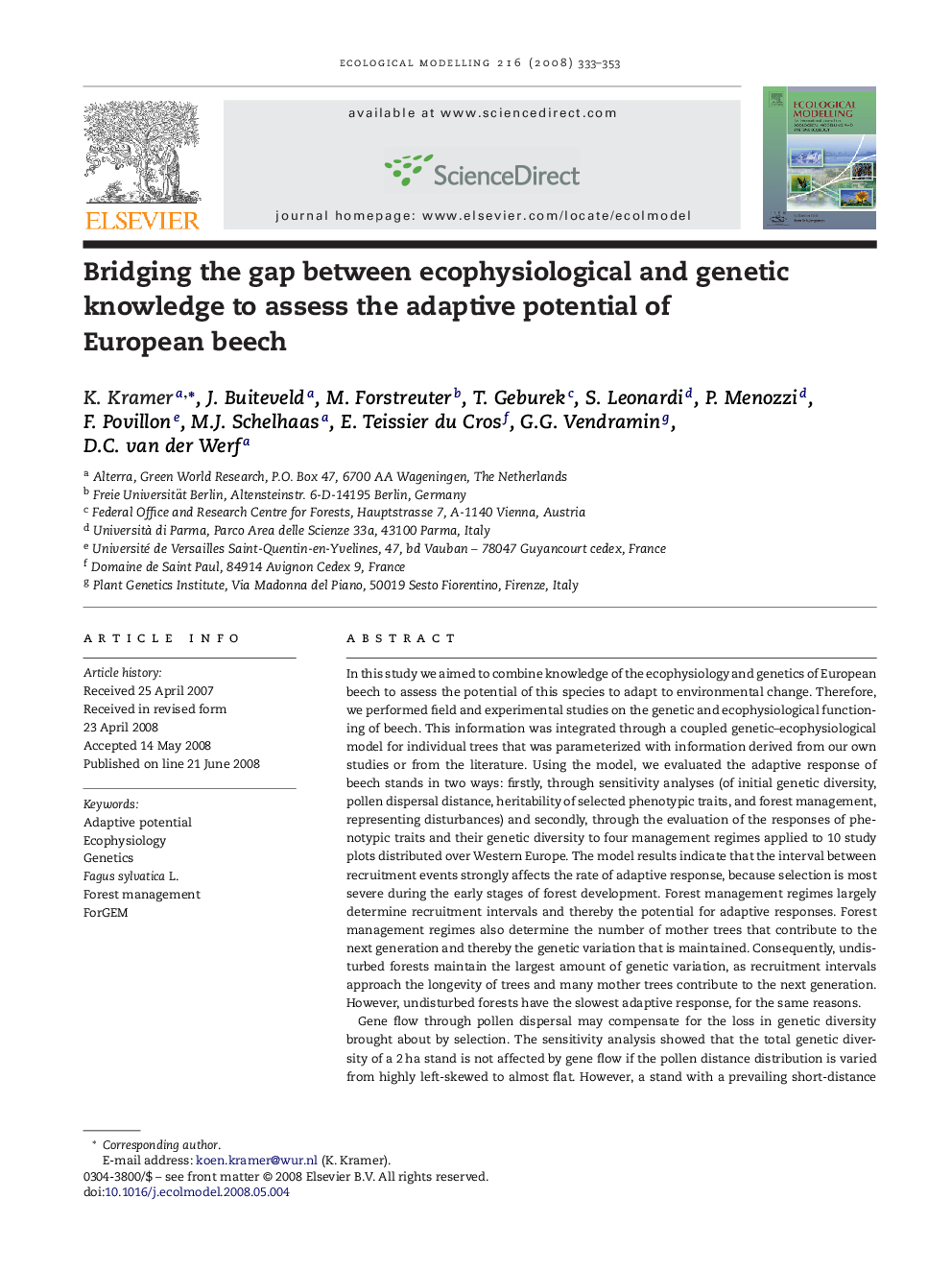| Article ID | Journal | Published Year | Pages | File Type |
|---|---|---|---|---|
| 4378012 | Ecological Modelling | 2008 | 21 Pages |
Abstract
The findings have two implications for modelling studies on the impacts of climate change on forests. Firstly: it cannot be taken for granted that parameter values remain constant over a time horizon of even a few generations - this is particularly important for threshold values subject to strong selection, like budburst, frost hardiness, drought tolerance, as used in species area models. Secondly: forest management should be taken into account in future assessments, as management affects the rate of adaptive response and thereby the response on trees and forests to environmental change, and because few forests are unmanaged. We conclude that a coupled ecophysiological and quantitative genetic tree model is a useful tool for such studies.
Related Topics
Life Sciences
Agricultural and Biological Sciences
Ecology, Evolution, Behavior and Systematics
Authors
K. Kramer, J. Buiteveld, M. Forstreuter, T. Geburek, S. Leonardi, P. Menozzi, F. Povillon, M.J. Schelhaas, E. Teissier du Cros, G.G. Vendramin, D.C. van der Werf,
